
Itatiaia National Park: Brazil's Hidden Gem of Natural Wonders
Discover the timeless beauty and diverse ecosystems of Itatiaia National Park, Brazil's oldest national park, offering hiking, birdwatching, and breathtaking waterfalls.
Nestled between the states of Rio de Janeiro and Minas Gerais, Itatiaia National Park is Brazil's oldest national park and a haven for nature lovers. Established in 1937, the park spans over 300 square kilometers and offers a diverse range of ecosystems, from lush Atlantic Rainforest to high-altitude grasslands. This makes it a hotspot for biodiversity, home to an array of flora and fauna, including many endemic species. Visitors can explore a variety of trails that cater to different levels of difficulty, from easy walks to challenging hikes. The park is famous for its breathtaking waterfalls, such as Véu da Noiva and Cachoeira Poranga, where you can take a refreshing dip. Birdwatchers will be delighted by the chance to spot over 350 species of birds, including the rare Itatiaia Spinetail and the majestic Black Hawk. For those interested in history and culture, the park also houses the Itatiaia Nature Museum, offering insights into the region's natural history and indigenous cultures. The park is an ideal destination for camping, with several well-maintained sites that bring you close to nature. Whether you're an adventurer, a birdwatcher, or simply looking to unwind in a serene environment, Itatiaia National Park has something to offer for everyone.
Local tips in Itatiaia National Park
- Visit during the dry season (May to September) for the best hiking conditions.
- Bring binoculars for birdwatching; the park is home to many rare species.
- Wear comfortable hiking boots, as some trails can be rocky and steep.
- Pack insect repellent and sunscreen to protect yourself from bugs and sun exposure.
- Arrive early in the morning to avoid crowds and enjoy the tranquility of the park.
- Check the weather forecast before your visit; the park's climate can be unpredictable.
- Make sure to carry enough water and snacks, especially if you plan on long hikes.
- Respect the park's rules and regulations to help preserve its natural beauty.
Itatiaia National Park: Brazil's Hidden Gem of Natural Wonders
Nestled between the states of Rio de Janeiro and Minas Gerais, Itatiaia National Park is Brazil's oldest national park and a haven for nature lovers. Established in 1937, the park spans over 300 square kilometers and offers a diverse range of ecosystems, from lush Atlantic Rainforest to high-altitude grasslands. This makes it a hotspot for biodiversity, home to an array of flora and fauna, including many endemic species. Visitors can explore a variety of trails that cater to different levels of difficulty, from easy walks to challenging hikes. The park is famous for its breathtaking waterfalls, such as Véu da Noiva and Cachoeira Poranga, where you can take a refreshing dip. Birdwatchers will be delighted by the chance to spot over 350 species of birds, including the rare Itatiaia Spinetail and the majestic Black Hawk. For those interested in history and culture, the park also houses the Itatiaia Nature Museum, offering insights into the region's natural history and indigenous cultures. The park is an ideal destination for camping, with several well-maintained sites that bring you close to nature. Whether you're an adventurer, a birdwatcher, or simply looking to unwind in a serene environment, Itatiaia National Park has something to offer for everyone.
When is the best time to go to Itatiaia National Park?
Unmissable attractions to see
Waterfall Slide
Discover the exhilarating Waterfall Slide in Itatiaia, where nature's beauty meets adrenaline-pumping fun, perfect for tourists seeking adventure.

Cachoeira Veu da Noiva
Experience the breathtaking beauty of Cachoeira Veu da Noiva in Itatiaia, a must-visit waterfall surrounded by lush landscapes and scenic trails.

Visitor Center (Museum of Flora and Fauna)
Explore the rich biodiversity of Brazil at the Visitor Center, Museum of Flora and Fauna, your gateway to Itatiaia National Park.

Três Cachoeiras
Experience the enchanting beauty of Três Cachoeiras in Penedo, a must-visit natural wonder with stunning waterfalls and lush landscapes.
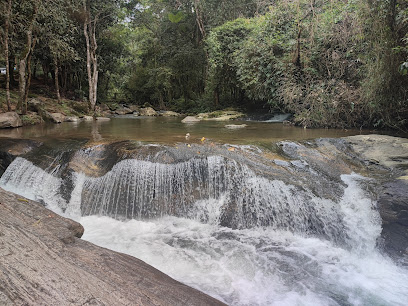
Cachoeira da Maromba
Discover the breathtaking beauty of Cachoeira da Maromba, a stunning waterfall in Itatiaia, Rio de Janeiro, perfect for nature lovers and adventurers alike.

Cachoeira Três Bacias
Discover the enchanting beauty of Cachoeira Três Bacias, a must-see waterfall in Penedo, Brazil, offering stunning scenery and serene nature experiences.

Pico das Prateleiras
Experience the stunning beauty and thrilling adventures of Pico das Prateleiras in Brazil's Parque Nacional de Itatiaia, a haven for nature lovers and hikers.
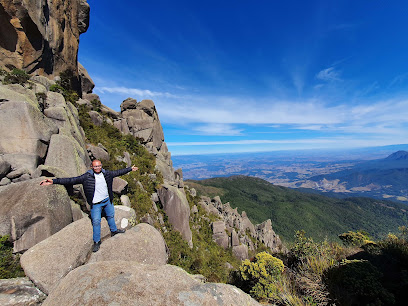
Itaporani Waterfall
Explore the breathtaking beauty of Itaporani Waterfall in Itatiaia, a serene natural retreat perfect for adventure and relaxation.

Pico Penedinho
Explore the breathtaking views and serene trails of Pico Penedinho, a nature lover's paradise in Itatiaia, Brazil.

Pico das Agulhas Negras
Discover the breathtaking views and rich biodiversity of Pico das Agulhas Negras in Itatiaia National Park, a top destination for nature lovers in Brazil.

Rapids Park
Discover the breathtaking landscapes, diverse wildlife, and adventure-filled activities at Rapids Park in Itatiaia, a must-visit destination for nature lovers.

Flowers Waterfall - Itatiaia National Park
Experience the breathtaking beauty of Flowers Waterfall in Itatiaia National Park, a must-visit for nature lovers and adventure seekers in Brazil.

Monkeys Waterfall
Explore the stunning Monkeys Waterfall in Itatiaia, a breathtaking natural attraction perfect for adventure seekers and nature lovers.

Maromba
Explore the breathtaking landscapes of Maromba, a hidden gem in Brazil's Itatiaia, perfect for nature lovers and adventure seekers.

Pedra do Altar
Discover the natural beauty of Pedra do Altar, a premier hiking destination in Brazil's Itatiaia National Park, offering breathtaking views and diverse wildlife.
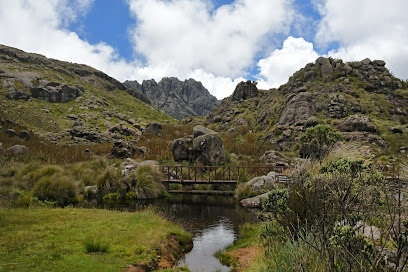
Essential places to dine
Graal Itatiaia
Discover Graal Itatiaia: The ultimate buffet experience with bakery delights and convenient services amidst Brazil's breathtaking landscapes.

Casa da Picanha Penedo
Experience authentic Brazilian barbecue at Casa da Picanha Penedo – where every bite tells a story.

Restaurante Jardim Secreto - Penedo RJ
Discover exquisite Brazilian cuisine in a serene garden setting at Restaurante Jardim Secreto in Penedo.
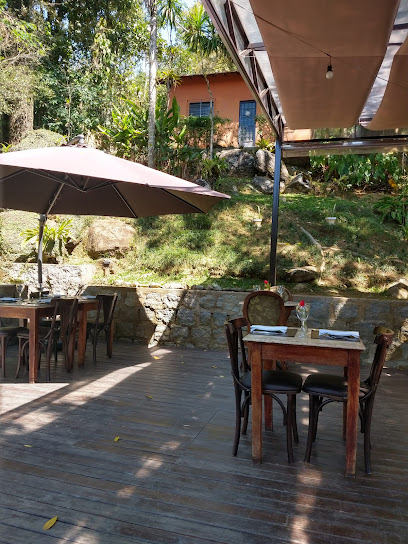
Zucchine Ristorante
Discover authentic Italian cuisine at Zucchine Ristorante in Itatiaia - where every meal is a celebration of flavor amidst breathtaking scenery.

Babel Restaurante
Experience exquisite Brazilian cuisine at Babel Restaurante in Itatiaia's stunning Vale do Pavão – where flavor meets breathtaking nature.

Markets, malls and hidden boutiques
Casa do Papai Noel - Pequena Finlândia
Discover the enchanting Casa do Papai Noel - Pequena Finlândia in Penedo, a unique shopping destination filled with local crafts and festive charm.

Itatiaia National Park
Explore the breathtaking beauty and diverse wildlife of Itatiaia National Park, a top destination for nature lovers and outdoor adventurers in Brazil.

Shopping Vale dos Duendes
Discover the vibrant Shopping Vale dos Duendes in Penedo, a unique blend of shopping, dining, and Brazilian culture in the heart of Rio de Janeiro.
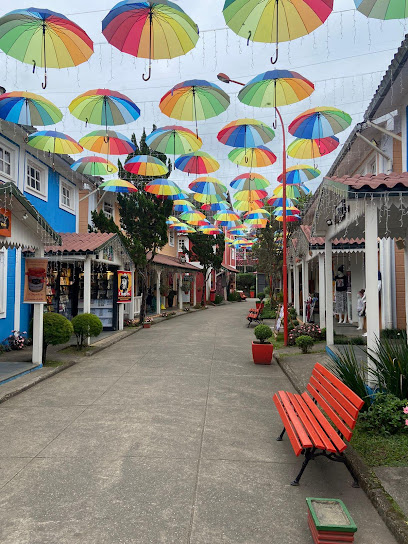
Fabrica de Chocolates
Discover the sweet side of Penedo at Fabrica de Chocolates, a charming destination for handcrafted delights and cocoa wonders.
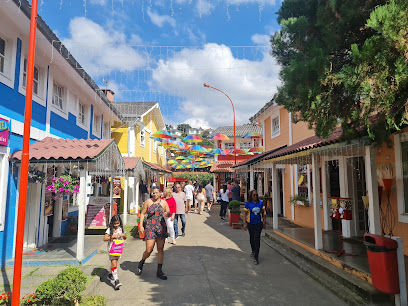
Visitor Center (Museum of Flora and Fauna)
Discover the beauty of Brazil's biodiversity at the Visitor Center (Museum of Flora and Fauna) in Itatiaia National Park.

Fuê Gelateria Natural
Experience the bliss of artisanal ice cream at Fuê Gelateria Natural, where every scoop is a burst of natural flavors in the heart of Penedo.

Cesta de Minas
Discover the delightful tastes of Cesta de Minas in Itatiaia, a charming bakery and cheese shop offering artisanal breads, local cheeses, and tempting ice creams.

Shopping Roda d’Água
Explore Shopping Roda d’Água in Penedo for a unique blend of local crafts, global brands, and delicious dining amidst stunning natural beauty.

Enoteca Serrana
Discover the essence of Italian dining at Enoteca Serrana, where exquisite cuisine meets a curated selection of fine wines in Itatiaia.

Pico das Prateleiras
Explore the breathtaking beauty of Pico das Prateleiras in Parque Nacional de Itatiaia, a hiking paradise for nature lovers and adventure seekers.
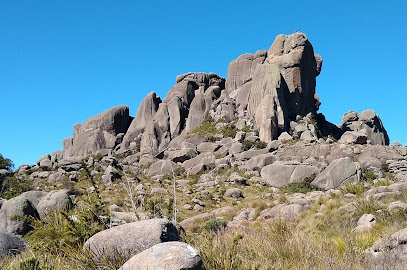
More Bread Bakery
Experience the rich flavors of Itatiaia at More Bread Bakery, where every bite offers a taste of artisanal craftsmanship and local tradition.

Chocolate do Papai Noel
Explore the enchanting world of artisanal chocolates at Chocolate do Papai Noel in Penedo, a sweet escape for chocolate lovers in Brazil.

Astral Exothéryca
Explore the cosmos at Astral Exothéryca, a unique shopping destination in Penedo, Brazil, offering celestial crafts and local treasures.
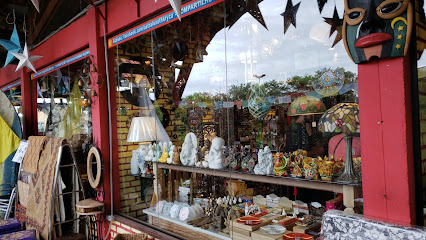
Terras da Finlandia Shopping
Explore Terras da Finlandia Shopping in Penedo, a blend of shopping, dining, and entertainment in a charming Brazilian setting.

Única - Arte para você
Explore a mystical realm at Única - Arte para Você, your go-to metaphysical supply store in Penedo, Brazil, for spiritual treasures and unique novelties.

Essential bars & hidden hideouts
Casa do Fritz
Experience authentic German cuisine and a vibrant bar atmosphere at Casa do Fritz in Penedo, Brazil - a culinary gem in the heart of nature.

Rei das Trutas
Discover the ultimate seafood experience at Rei das Trutas in Penedo, where fresh flavors and stunning scenery create unforgettable dining moments.
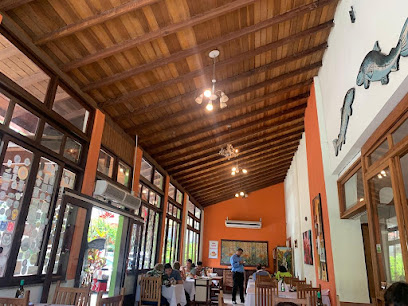
Petit Gourmet Restaurante
Experience the flavors of Brazil at Petit Gourmet Restaurante in Penedo, where diverse culinary options meet a warm and inviting atmosphere.

Restaurante Jardim Secreto - Penedo RJ
Experience the enchanting flavors of Brazil at Restaurante Jardim Secreto in Penedo, where culinary excellence meets nature's beauty.

Bucanero
Discover the flavors of the sea at Bucanero, a seafood restaurant in Penedo, known for its fresh dishes and stunning natural ambiance.

Restaurante Marioca
Savor the authentic taste of Brazil at Restaurante Marioca, a lively bar and restaurant in Itatiaia offering traditional dishes and refreshing drinks.

Guela Seca Penedo
Experience the vibrant flavors and lively atmosphere at Guela Seca Penedo, a top destination for food and drinks in the heart of Penedo.

Zero A Zero
Experience the vibrant flavors of Brazil at Zero A Zero, a culinary haven in Penedo offering a diverse menu and inviting atmosphere.

Bar do Cowboy Restaurante e Pizzaria
Experience the best of Brazilian and Italian cuisine at Bar do Cowboy Restaurante e Pizzaria, a culinary gem in Itatiaia.

Enoteca Serrana
Discover exquisite Brazilian cuisine and a fine selection of wines at Enoteca Serrana in Itatiaia, a culinary paradise for travelers.

Pé De Canela Buteco
Experience the authentic flavors of Brazil at Pé De Canela Buteco, Penedo's favorite bar and restaurant for tourists and locals alike.

House Beatles Visconde de Mauá
Experience the magic of music and cocktails at House Beatles, a cozy bar in Visconde de Mauá celebrating the legacy of The Beatles.

Clave Steak House - Penedo
Experience top-tier Brazilian cuisine at Clave Steak House in Penedo, where every meal is a celebration of flavor and quality.

Cantinho Mineiro da Tia Lili
Discover the rich flavors of Brazil at Cantinho Mineiro da Tia Lili, a beloved restaurant in Penedo offering homemade dishes in a cozy setting.

Morrison Rock Bar
Discover Morrison Rock Bar, a vibrant cocktail haven in Itatiaia, offering stunning views and expertly crafted drinks in a lively atmosphere.

Local Phrases about Itatiaia National Park
-
- HelloOi
[Oy] - GoodbyeTchau
[Chow] - YesSim
[Seem] - NoNão
[Nao] - Please/You're welcomePor favor
[Por fah-vor] - Thank youObrigado
[Oh-bree-gah-doh] - Excuse me/SorryCom licença/Desculpe
[Cohm lee-sen-sah/Des-kool-peh] - How are you?Como vai?
[Koh-moh vah-ee?] - Fine. And you?Bem. E você?
[Behm. Eh voh-seh?] - Do you speak English?Você fala inglês?
[Voh-seh fah-lah een-gless?] - I don't understandEu não entendo
[Ayoo now en-ten-doh]
- HelloOi
-
- I'd like to see the menu, pleaseEu gostaria de ver o cardápio, por favor
[Ayoo goh-stah-ree-ah jee ver oo kar-dah-pyo, poor fah-vor] - I don't eat meatEu não como carne
[Ayoo now koh-moh kar-nee] - Cheers!Saúde!
[Sah-oo-deh] - I would like to pay, pleaseEu gostaria de pagar, por favor
[Ayoo goh-stah-ree-ah jee pah-gar, poor fah-vor]
- I'd like to see the menu, pleaseEu gostaria de ver o cardápio, por favor
-
- Help!Ajuda!
[Ah-zoo-dah!] - Go away!Vá embora!
[Vah ehm-boh-rah!] - Call the Police!Chame a polícia!
[Sha-meh ah poh-lee-see-ah!] - Call a doctor!Chame um médico!
[Sha-meh oom meh-dee-koo!] - I'm lostEstou perdido
[Es-toh pehr-dee-doh] - I'm illEstou doente
[Es-toh doh-en-chee]
- Help!Ajuda!
-
- I'd like to buy...Eu gostaria de comprar...
[Ayoo goh-stah-ree-ah jee kohm-prar...] - I'm just lookingEstou só olhando
[Es-toh soo oh-yahn-doh] - How much is it?Quanto custa?
[Kwan-toh koos-tah?] - That's too expensiveIsso é muito caro
[Ee-so eh moo-ee-too kah-ro] - Can you lower the price?Você pode baixar o preço?
[Voh-seh poh-deh bahy-shar oo preh-so?]
- I'd like to buy...Eu gostaria de comprar...
-
- What time is it?Que horas são?
[Keh oh-rahss sah-oh?] - It's one o'clockÉ uma hora
[Eh oo-mah oh-rah] - Half past (10)Meio-dia
[May-oh-dee-ah] - MorningManhã
[Mahn-yah] - AfternoonTarde
[Tahr-dee] - EveningNoite
[Noy-chee] - YesterdayOntem
[Ohn-taym] - TodayHoje
[Oh-zhee] - TomorrowAmanhã
[Ah-mahn-yah] - 1Um
[Oom] - 2Dois
[Doyss] - 3Três
[Trehss] - 4Quatro
[Kwah-troh] - 5Cinco
[Seen-koh] - 6Seis
[Sayss] - 7Sete
[Set-ee] - 8Oito
[Oy-toh] - 9Nove
[Noh-veh] - 10Dez
[Deyss]
- What time is it?Que horas são?
-
- Where's a/the...?Onde fica o/a...?
[Ohn-dee fee-kah oh/ah...?] - What's the address?Qual é o endereço?
[Kwah-lee eh oh en-deh-reh-so?] - Can you show me (on the map)?Você pode me mostrar (no mapa)?
[Voh-seh poh-deh meh moh-strahr (noh mah-pah)?] - When's the next (bus)?Quando é o próximo (ônibus)?
[Kwan-doh eh oh proh-kssee-moh (ohn-ee-boos)?] - A ticket (to ....)Um bilhete (para ...)
[Oom beel-yeh-teh (pah-rah ...)]
- Where's a/the...?Onde fica o/a...?
History of Itatiaia National Park
-
Long before the arrival of European settlers, the region now known as Itatiaia National Park was inhabited by indigenous tribes such as the Puri and Botocudo peoples. These tribes lived in harmony with the land, utilizing its abundant natural resources for sustenance and cultural practices. The dense forests, rivers, and mountains provided them with food, medicinal plants, and materials for crafting tools and shelter.
-
The first recorded European presence in the area dates back to the 17th century when Portuguese explorers ventured into the region. They were in search of gold and other resources and often clashed with the indigenous inhabitants. The rugged terrain of the Serra da Mantiqueira mountain range posed significant challenges to these early explorers, but it also revealed the area's rich biodiversity and stunning landscapes.
-
During the 19th century, the coffee boom in Brazil led to widespread deforestation in many regions, including the area that would become Itatiaia National Park. Vast tracts of forest were cleared to make way for coffee plantations. However, the remote and rugged nature of the Serra da Mantiqueira mountains saved parts of the forest from complete destruction, preserving some of the region's rich biodiversity.
-
In 1937, Itatiaia National Park was established as Brazil's first national park, marking a significant milestone in the country's conservation efforts. The park was created to protect the unique montane ecosystem and its diverse flora and fauna. The initiative was driven by botanist Alberto Loefgren and other conservationists who recognized the ecological importance of the region. The park's establishment was a pivotal moment in Brazilian environmental history, setting a precedent for future conservation efforts.
-
Throughout the 20th century, Itatiaia National Park became a hub for scientific research. Ecologists, botanists, and zoologists from around the world visited the park to study its unique ecosystems. Numerous species of plants and animals, some of which are endemic to the region, were documented. The park's high-altitude grasslands, cloud forests, and pristine rivers provided a living laboratory for understanding ecological processes and biodiversity.
-
Itatiaia National Park holds cultural significance for local communities and visitors alike. The park's name, derived from the Tupi-Guarani language, means 'many-pointed rock,' reflecting the striking geological formations found in the region. The park is also home to historical sites such as the ruins of old coffee plantations and colonial-era buildings. These remnants provide a glimpse into the area's past and its transformation over time.
-
Today, Itatiaia National Park continues to be a focal point for conservation and ecotourism in Brazil. Efforts to protect and restore the park's ecosystems are ongoing, with initiatives aimed at reforestation, wildlife protection, and sustainable tourism. The park's diverse landscapes, from lush Atlantic Forest to alpine meadows, attract nature enthusiasts, hikers, and researchers. Itatiaia remains a testament to the importance of preserving natural heritage for future generations.
Itatiaia National Park Essentials
-
Itatiaia National Park is located in the state of Rio de Janeiro, Brazil, near the border with Minas Gerais. The closest major cities are Rio de Janeiro and São Paulo. The nearest airport is Galeão International Airport (GIG) in Rio de Janeiro, approximately 180 kilometers away. From there, you can rent a car or take a bus to Itatiaia. The journey by car takes around 3 hours. Alternatively, you can take a bus from Rio de Janeiro's Novo Rio Bus Terminal to Itatiaia town, which takes about 4 hours.
-
Within Itatiaia National Park, the best way to get around is by car. Renting a car offers the flexibility to explore the park at your own pace. There are also local tour operators that provide guided tours and transportation within the park. For those who prefer public transport, local buses and taxis are available in the nearby towns of Itatiaia and Resende, but they may not reach all park destinations. Hiking is a popular way to explore the park's trails and scenic spots.
-
The official currency in Brazil is the Brazilian Real (BRL). Credit and debit cards are widely accepted in hotels, restaurants, and shops in the towns surrounding the park. However, it is advisable to carry cash for smaller establishments and for entrance fees to certain parts of the park. ATMs are available in the nearby towns, but it's wise to withdraw sufficient cash before heading into more remote areas of the park.
-
Itatiaia National Park is generally safe for tourists. However, standard precautions should be taken. Avoid walking alone in isolated areas, especially at night. Keep an eye on your belongings and avoid displaying valuables. While the park and surrounding areas are relatively safe, the nearest major cities, such as Rio de Janeiro, have higher crime rates, particularly in certain neighborhoods. Always research and avoid high-crime areas in major cities when traveling to and from the park.
-
In case of emergency, dial 190 for police, 192 for medical emergencies, and 193 for fire services. It is recommended to have travel insurance that covers medical emergencies and evacuation. The nearest hospitals are located in the towns of Itatiaia and Resende, which are a short drive from the park. For minor health issues, there are pharmacies in these towns where you can purchase over-the-counter medications.
-
Fashion: Do wear comfortable and durable clothing suitable for hiking. Avoid wearing flip-flops or open-toed shoes on trails. Religion: Do respect local customs and traditions, although the park itself is secular. Public Transport: Do be respectful and patient when using local buses or taxis. Don't expect public transport to be punctual. Greetings: Do greet locals with a friendly 'Bom dia' (Good morning) or 'Boa tarde' (Good afternoon). A handshake is a common greeting. Eating & Drinking: Do try local cuisine and beverages, such as pão de queijo and natural fruit juices. Don't litter; always dispose of your trash properly.
-
To experience Itatiaia National Park like a local, visit during the weekdays to avoid the weekend crowds. Engage with local guides who can offer in-depth knowledge about the park's flora, fauna, and history. Don't miss the chance to hike to Pico das Agulhas Negras, the highest point in the park, for stunning panoramic views. Try to participate in local events and festivals in the nearby towns to get a taste of local culture and traditions.
Nearby Cities to Itatiaia National Park
-
Things To Do in São Paulo
-
Things To Do in Florianópolis
-
Things To Do in Brasília
-
Things To Do in Foz do Iguaçu
-
Things To Do in Puerto Iguazú
-
Things To Do in Hernandarias
-
Things To Do in Salvador
-
Things To Do in Villarrica
-
Things To Do in Encarnacion
-
Things To Do in Carmen del Parana
-
Things To Do in San Bernardino
-
Things To Do in Ypacarai
-
Things To Do in Aregua
-
Things To Do in Asuncion
-
Things To Do in Tacuarembó











